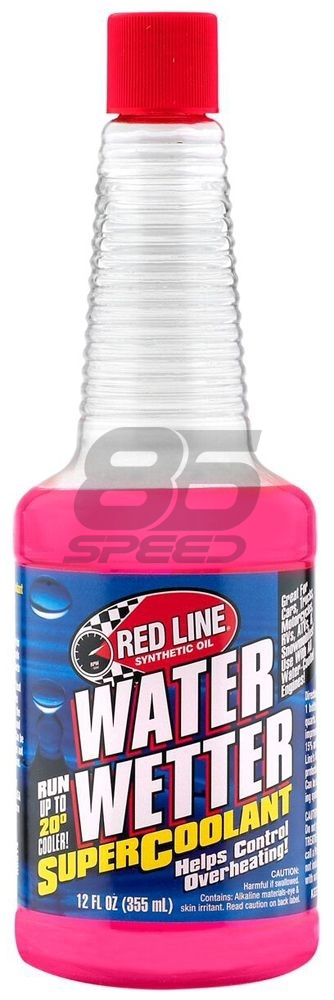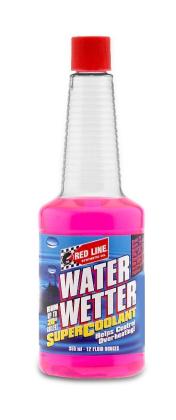
Short of that, any household tap water purification system is certainly better than straight tap water. This is what we use exclusively in all of our cooling systems. We had this water tested and discovered it removes virtually all of the dissolved metal impurities. We found a company called Glacier Water that places water dispensers outside grocery stores and sells this water for thirty cents a gallon. If soft water is not easily attainable, look for drinking water that has been purified by reverse osmosis. While some enthusiasts balk at this because they claim that it adds salt to the water, if you’ve ever tasted soft water, you know that’s not the case. Because the water is chemically balanced, it will not strip electrons from the soft metals in the cooling system, which is exactly what we want. This process uses the sodium ion to create a balanced solution. So-called soft water is actually a process that mixes sodium chloride (NaCl) with the water to remove these same impurities. There are a couple of different versions of purified water that are far better alternatives. So you can see that starting with distilled water mixed with any kind of anti-corrosion additive instantly puts a much greater load on the anti-corrosive additives. These include zinc, magnesium, and aluminum. So when distilled water is poured into a cooling system, it immediately begins the process of stripping electrons from the soft metals in the system. While we didn’t learn much in high school chemistry, one fact we did retain was that any chemical solution will attempt to balance itself. Yes, the distillation process does remove nearly 100 percent of impurities, but the process of stripping away these materials also causes the water to become chemically imbalanced. But Ross warns that distilled water is not as ideal as it sounds.

You’ve probably heard, as we have, that distilled water is the best water to use.

Clearly, using water that removes all these contaminants would be a good thing. We won’t get into the details, but the water had shockingly high levels of something called total dissolved solids along with metals like iron that only make the anti-corrosion additive’s job more difficult. We had our local Southern California tap water tested and were shocked at the levels of impurities. As you can imagine, not all water is the same. A major step you can take to improve cooling system performance is to begin with the right water. Over the years, we have discussed the issue of reducing corrosion with APS owner Jay Ross, and I’ve learned quite a bit about what happens in the cooling system. Other similar products that I have also used in this same category are Royal Purple’s Purple Ice, and Driven’s Coolant System Protector (CSP). It is designed to be used for about a year and then should be fortified. For years, we’ve used their No-Rosion additive, and it has performed exceptionally well. The company has recently introduced a high performance additive called Hyper-Kuhl that performs the anti-corrosion job but also improves cooling system efficiency. They offer a couple of products that will work. Our experience over the last 20 years or so of playing with different anti-corrosion products led us to a company called Applied Chemical Specialties (APS). There are a ton of these additives out there and many do an excellent job.

For those living in these milder climates, you could get away with straight water with only an anti-corrosion additive. Here in Southern California, if it drops below 50 degrees F in the depth of winter, it’s headline news. So straight away, it would appear that the best coolant you can run is straight water.īut obviously we will need an additive to control corrosion as well as something to protect against freezing during the cold months. It has the ability to absorb more heat per unit of measure than any other coolant and matches that with the capacity to transfer that heat to the radiator more efficiently than any other coolant. Plain old fresh water is an amazing liquid. But if we apply a little science and do some digging, you might discover that a traditional, simplistic approach is often the best – leaving the “miracle” fluids to the dream chasers. And as you have discovered, there is plenty of misinformation and outrageous claims of performance.

Jeff Smith: Over the years, I’ve spent more time than I should have researching and testing engine coolants, additives, and their performance characteristics. I’ve also seen claims about additives you can just pour in and the engine will run cooler. Now that the temperature is heating up and my engine seems to be running hotter, I’m reading all kinds of stuff on the internet about different coolants.


 0 kommentar(er)
0 kommentar(er)
